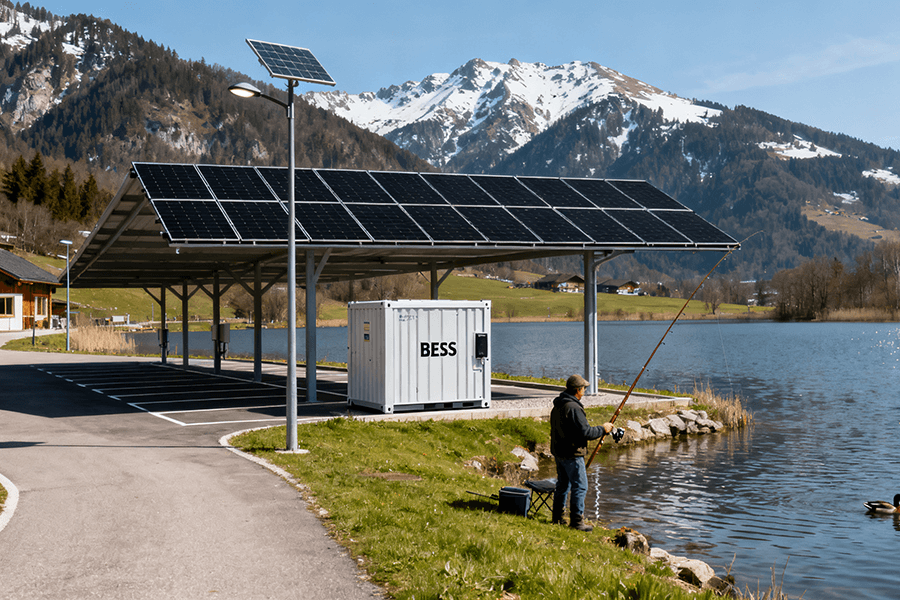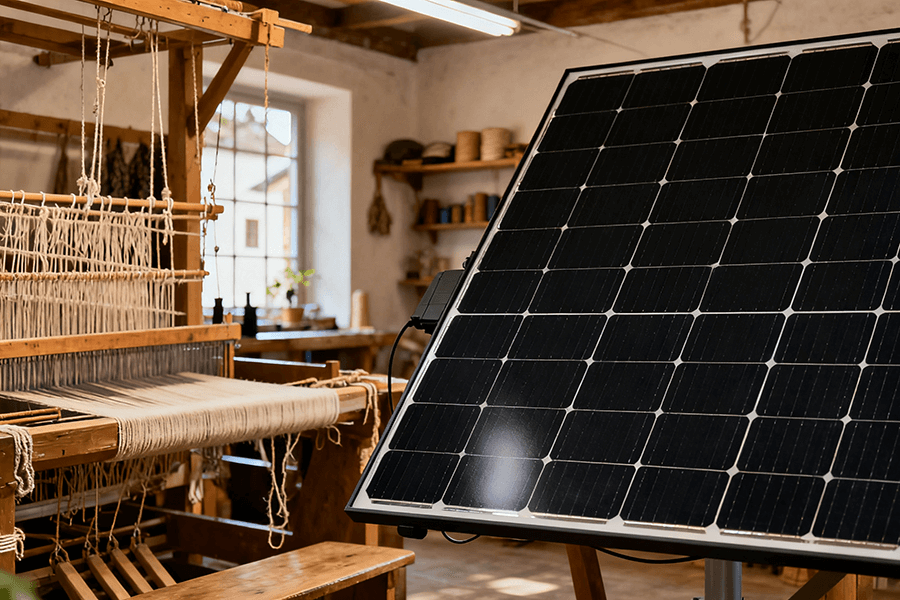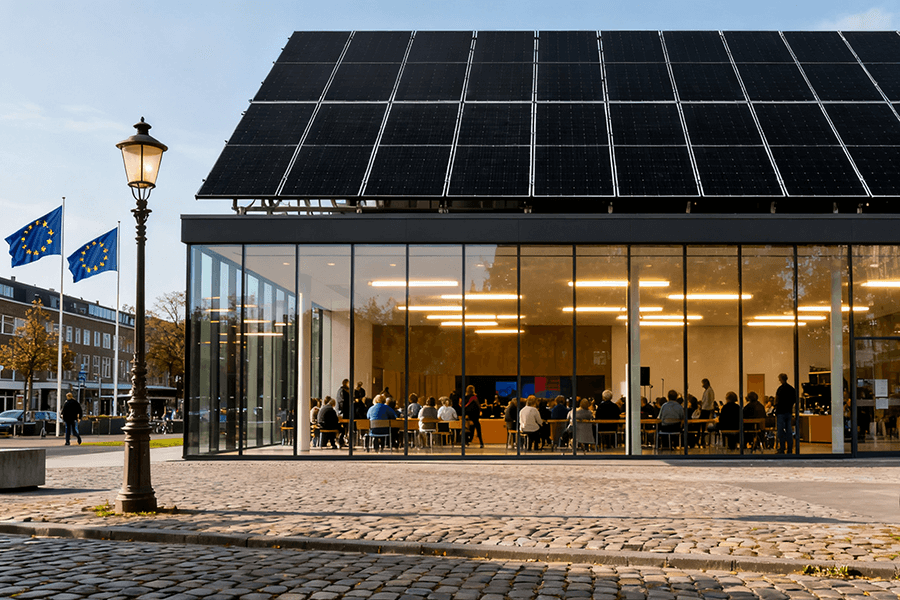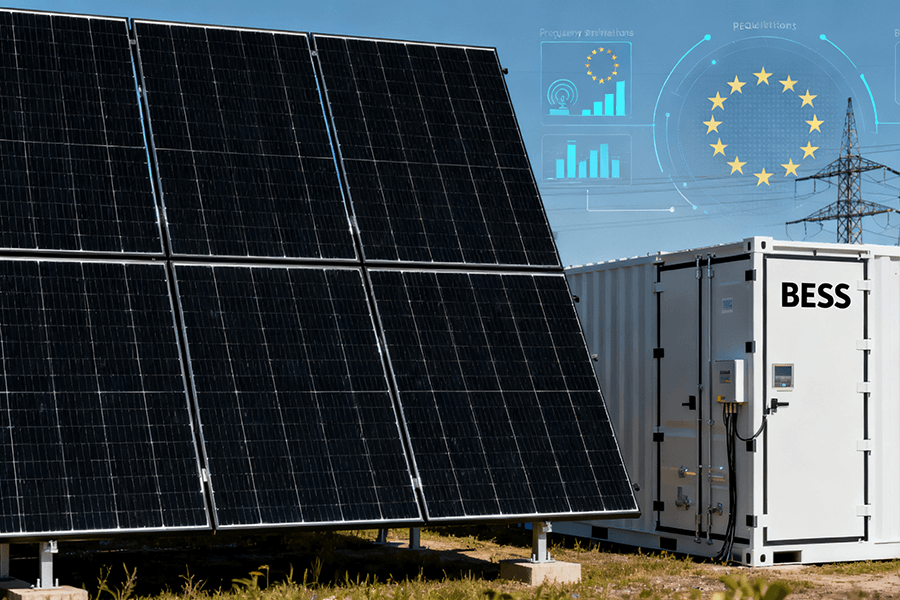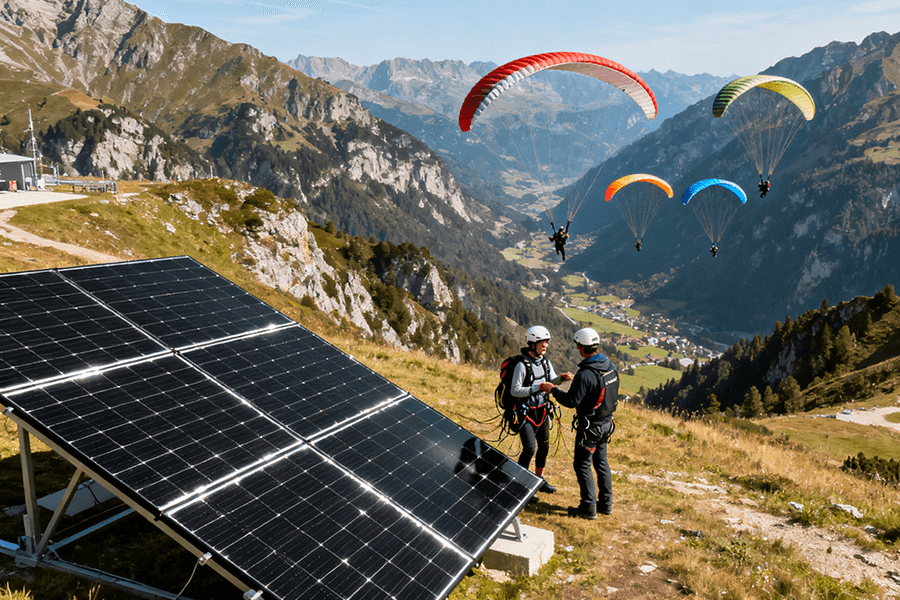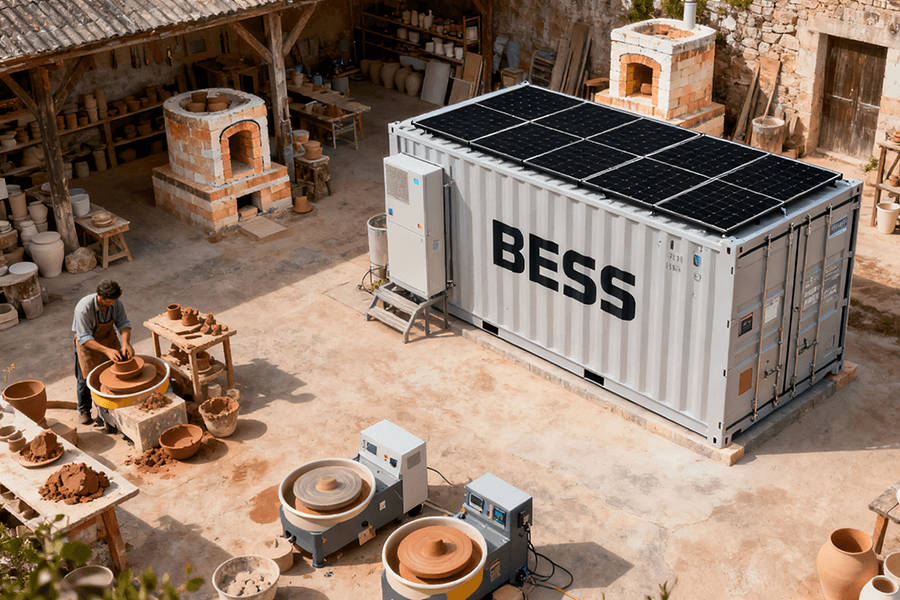
Picture This: The Power Struggles of Remote Areas
Imagine a small mountain village where the lights seem to have a mind of their own, flickering off more often than a kid loses interest in broccoli. This isn’t just an annoyance; it’s a real-world problem faced by countless remote areas around the globe.
In these power-starved regions, the concept of a stable, reliable power supply often feels like a distant dream. The harsh reality? Frequent blackouts disrupt daily life, hinder economic activities, and even pose risks to critical services like healthcare and communication.
Enter the Game Changers: BESS Containers
But fear not, because here come the “power superheroes”—Battery Energy Storage System (BESS) containers. These nifty contraptions are on a mission to revolutionize the way remote areas access and manage power.
Unpacking the Potential
In this article, we’re going to take a deep dive into how BESS containers are swooping in to save the day, turning power nightmares into reliable power realities. We’ll explore the unique challenges faced by remote regions, the technical prowess of BESS solutions, and the transformative impact they can have on communities worldwide.
Unique Challenges in Remote Areas
A. Long-Distance Transmission Losses
Transmitting power over long distances is no easy feat. It’s like trying to carry water in a leaky bucket—the farther you go, the more water (or in this case, power) you lose. According to the International Energy Agency (IEA), in some remote areas, transmission losses can reach up to 20% of the total power generated [1]. For example, in the vast outback of Australia, where distances between power generation sources and consumers can be astronomical, these losses are a significant headache. The long transmission lines act like energy vampires, sucking away a substantial portion of the power before it even reaches its destination. This not only leads to wasted energy but also increases the cost of providing power to these remote areas.
B. Limited Grid Access
Remote areas are like the “lonely islands” of the power world. They’re often located far from the main power grid, and the cost of extending the grid to reach them is prohibitively high. It’s like trying to build a bridge to a tiny, far-off island—the expenses can quickly add up. In the United States, the Energy Information Administration (EIA) estimates that it can cost upwards of $1 million per mile to extend the grid to remote, low-density areas [2]. This cost is simply too much for many rural and remote communities, leaving them with limited or no access to the reliable grid power that urban areas take for granted. As a result, these areas often have to rely on alternative, and sometimes less reliable, power sources.
C. Harsh Environmental Conditions
Extreme cold in the Arctic or searing heat in the desert can play havoc with power systems. Components are constantly under siege, as if they’re in a never-ending battle against the elements. In the Arctic, temperatures can drop to as low as -50°C (-58°F), which can cause batteries to lose their charge capacity and electronic components to malfunction. On the other hand, in the deserts of the Middle East, temperatures can soar above 50°C (122°F), leading to overheating of power equipment. Moreover, weather events like monsoons in Southeast Asia or sandstorms in the Sahara can physically damage power infrastructure. A study by the World Meteorological Organization (WMO) found that in regions prone to such extreme weather, power outages due to environmental factors can occur up to 50 days a year on average [3]. This not only disrupts daily life but also impacts economic activities in these remote areas.
How BESS Containers Overcome Challenges
A. Storing Energy from Local Renewable Sources
BESS containers are like the “energy squirrels” of the power world. They hoard energy from local solar panels and wind turbines during good weather, storing it away for a rainy (or in this case, a low-generation) day. Take, for instance, a remote village nestled in the African savannah. This community had long grappled with inconsistent power supply, relying heavily on costly diesel generators to meet their energy needs. The situation took a turn for the better when a BESS container was integrated with a local solar power installation.
During the sunny hours of the day, the solar panels generate more power than the village needs. The BESS container steps in and stores this excess energy with remarkable efficiency, using advanced battery management systems that optimize charging and discharging cycles. These systems are designed to prevent overcharging and deep discharging, thereby extending the lifespan of the batteries within the container.
Then, when the sun goes down and the demand for power for lighting and basic appliances increases, the stored solar energy is released. This has significantly reduced the village’s reliance on expensive diesel generators, which were previously used to fill the power gap. In fact, the village has seen a 60% reduction in diesel consumption since the installation of the BESS-solar combination [4]. Moreover, the consistent power supply has spurred economic development in the village. Small businesses can now operate for longer hours, and residents have access to reliable lighting, which has improved their overall quality of life.
B. Providing Power during Grid Outages
When the grid takes an unexpected “nap,” BESS containers are there to save the day as reliable backup power sources. Consider a small rural hospital situated in the mountains of South America. Before the installation of a BESS container, power cuts were a constant threat, often disrupting life-saving medical procedures and putting patients at risk. The hospital’s operations were at the mercy of an unreliable grid, and the lack of a consistent power supply hindered the delivery of quality healthcare.
But now, with the BESS container in place, the hospital’s resilience has been transformed. The container is equipped with a sophisticated monitoring system that continuously assesses the power grid’s status. As soon as an outage is detected, the BESS container seamlessly switches to backup mode, ensuring that the transition is smooth and uninterrupted. The hospital can keep its lights on, medical equipment running, and refrigerators storing vaccines at the right temperature for up to 12 hours during a grid outage [5].
This extended backup power capability has been a game-changer for the local community. It has not only improved the quality of healthcare but has also saved countless lives. Surgeries that were once postponed due to power outages can now proceed as scheduled, and critical medical equipment such as ventilators and dialysis machines can operate without interruption. Additionally, the BESS container has reduced the hospital’s operating costs by minimizing the need for expensive diesel generators during outages.
Specific Design Considerations for BESS Containers in Remote Areas
A. Rugged Construction to Withstand Extreme Weather
BESS containers are built like superheroes’ suits, designed to withstand all kinds of attacks—in this case, extreme weather. They are constructed using robust materials that can endure hurricane-force winds, extreme cold, and searing heat. For example, some BESS containers are made with double-walled insulation to protect against temperature extremes. They are also tested and certified to meet international standards. Underwriters Laboratories (UL) has a set of standards for energy storage systems, including those in harsh environments. BESS containers that meet UL 9540A certification, for instance, are proven to be able to withstand thermal runaway events, which can be a concern in extreme heat [6]. This ensures that they can operate reliably even in the most challenging environmental conditions.
[6]: UL 9540A Standard
B. Off-Grid Operation Capabilities
In off-grid scenarios, BESS containers are like self-contained spaceships, functioning independently. They are equipped with advanced inverters that convert the DC power stored in the batteries to AC power, which can be used to power homes, businesses, or industrial equipment. An energy management system (EMS) is also a crucial component. The EMS monitors the power generation from renewable sources, the power consumption of the connected loads, and the state of charge of the batteries. It intelligently decides when to charge the batteries, when to discharge them, and how to balance the power supply and demand. For example, in an off-grid industrial site in a remote forest, a BESS container with a capacity of 1 MWh, combined with a small wind turbine and solar panels, is able to power the site’s operations continuously. The EMS ensures that during periods of high wind or sunlight, the excess energy is stored in the BESS container, and during low-generation periods, the container supplies the required power [7].
Case Studies
A. Remote Community Case Study
In a small village in the African savannah, the power situation was dire. Frequent blackouts were the norm, and the unreliable power supply made it difficult to power basic needs like lighting and water pumps. The village had an average of 3 blackouts per week, each lasting an average of 4 hours [8]. To solve this problem, a BESS container was installed and integrated with local solar panels. The installation process was carefully planned, with local technicians receiving training on the operation and maintenance of the system. The BESS container has a capacity of 200 kWh, which is sufficient to store the excess solar energy generated during the day. Since the installation, the blackout frequency has been reduced to less than 1 per month, and the village now has a reliable power supply for community-wide events. The villagers can now run small businesses, such as charging mobile phones and operating small shops, which has boosted the local economy.
B. Industrial Site in a Remote Area Case Study
A mining operation in a remote mountainous region faced critical power requirements for its industrial processes. The existing power supply, mainly relying on diesel generators, was expensive and unreliable. The cost of diesel for the generators was $500,000 per month, and power outages due to generator failures or fuel shortages occurred 2-3 times a month [9]. To address this, a customized BESS container solution was implemented. The BESS container, with a capacity of 5 MWh, was integrated with a hybrid system that included solar panels and a smaller diesel generator for backup. The solar panels generate power during the day, which is either used directly or stored in the BESS container. The BESS container then supplies power during the night or when the solar generation is low. As a result, the mine has seen a 40% reduction in diesel consumption, leading to significant cost savings. The increased power reliability has also boosted productivity, as mining operations can now run more smoothly without disruptions.
[9]: Mining Power Project
Potential Limitations and Solutions
A. Regular Maintenance in Hard-to-Reach Locations
Maintaining BESS containers in remote areas is no easy task. It’s like trying to service a car on the moon—the logistics can be extremely challenging. However, technology has come to the rescue. Remote monitoring systems are now widely used. These systems can continuously monitor the health of the BESS container, including the state of charge of the batteries, the performance of the inverters, and the temperature inside the container. For example, a company in the oil and gas industry that has BESS containers installed in remote desert locations uses a satellite-based remote monitoring system. This system can detect any potential issues, such as a battery cell starting to degrade, and send an alert to the maintenance team. In addition, local technicians can be trained to handle basic maintenance tasks, such as cleaning the solar panels (if integrated) and checking for any visible signs of wear and tear. This combination of remote monitoring and local support helps to ensure the reliable operation of BESS containers in hard-to-reach locations.
B. Other Potential Limitations (e.g., Initial Cost, Battery Lifespan)
The high initial cost of installing BESS containers is often a concern. It’s like the upfront investment of buying a luxury car—a significant amount of money upfront. For a medium-sized BESS container with a capacity of 1-2 MWh, the installation cost can range from (500,000 to )1 million [10]. However, the long-term benefits, such as reduced energy costs and increased power reliability, often outweigh this initial investment. Battery lifespan is another consideration. Lithium-ion batteries, commonly used in BESS containers, typically have a lifespan of 10-15 years under normal operating conditions. To mitigate this, proper battery management systems are crucial. These systems can optimize the charging and discharging cycles of the batteries, ensuring they are not over-charged or over-discharged. Regular maintenance, such as checking the electrolyte levels (in some battery types) and monitoring the battery temperature, can also help extend the battery lifespan.
[10]: BESS Cost Analysis
Maxbo Solar’s Role
A. Introduction to Maxbo Solar
At Maxbo Solar, we’re not just another player in the solar game; we’re the maestros conducting the symphony of sustainable power solutions. We’ve been at the forefront of developing innovative solar and energy storage technologies for years. Our website, www.maxbo-solar.com, is a treasure trove of information for those interested in our offerings. Whether you’re a small rural community looking for reliable power or a large industrial site aiming to reduce your carbon footprint and energy costs, we have the solutions to meet your needs.
B. Our BESS Container Solutions for Remote Areas
Our unique approach to designing BESS containers for remote areas sets us apart. We’ve developed a patented thermal-management technology that’s a game-changer. This technology ensures that our BESS containers perform optimally even in the most extreme temperatures, whether it’s the freezing cold of the Arctic or the scorching heat of the Sahara. In a project in the Arctic, our BESS containers with this thermal-management system were able to maintain a stable operating temperature, allowing for efficient energy storage and discharge, even when the outside temperature dropped to -40°C (-40°F) [11].
We’ve also had great success stories in remote regions. For example, we helped a small island community in the Pacific achieve 100% renewable energy independence with our BESS container-integrated solar systems. The community was previously relying on expensive diesel generators, but with our solution, they now have a reliable, clean, and cost-effective power supply. Our customer support and maintenance services are tailored to the needs of remote areas. We have a 24/7 remote monitoring team that constantly keeps an eye on the performance of our BESS containers. In case of any issues, our quick-response teams are on standby to provide solutions, whether it’s through remote troubleshooting or dispatching technicians to the site as soon as possible.
Conclusion
Remote areas face significant challenges in achieving reliable power. Key issues include:
- Long-distance transmission losses: Power generated far from consumption points results in substantial energy waste during transmission.
- Limited grid access: Many remote locations lack sufficient grid infrastructure, leaving residents and industries underserved.
- Harsh environmental conditions: Extreme temperatures, humidity, dust, and rugged terrains pose threats to power generation and distribution systems.
However, Battery Energy Storage System (BESS) containers have emerged as a powerful solution. Their primary functions include:
- Local renewable energy storage: Capturing and storing energy from sources like solar and wind, enabling its use when production is low.
- Backup power during outages: Providing electricity when the main grid fails, ensuring essential services remain operational.
The advantages of BESS containers in remote areas are clear:
- Rugged construction: Built to withstand harsh environmental conditions, ensuring durability and reliability.
- Off-grid capabilities: Operate independently of the main power grid, making them suitable for even the most remote and challenging locations.
Real-world case studies have demonstrated the positive impact of BESS containers on power reliability in both remote communities and industrial sites. For instance, [Case Study 1] shows how a remote village’s energy situation improved after installing BESS containers, while [Case Study 2] details the benefits for an industrial site in a hard-to-reach area.
Despite these benefits, there are limitations:
- Maintenance in hard-to-reach areas: Servicing BESS containers can be difficult and costly due to remote locations.
- Initial costs: The upfront investment for purchasing and installing BESS containers can be high.
However, solutions are available to address these challenges. At Maxbo Solar, we’re proud to be part of the solution, offering innovative BESS container solutions tailored to the unique needs of remote areas. Our offerings include:
- Customized system design based on specific energy requirements and environmental conditions.
- Remote monitoring and maintenance services to reduce downtime and costs.
With continued innovation and the efforts of companies like ours, the future of reliable power in remote areas looks bright. As technology advances and costs decrease, BESS containers will play an even more significant role in ensuring energy access and reliability for all.

